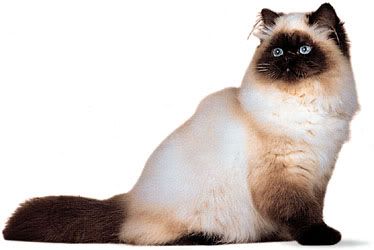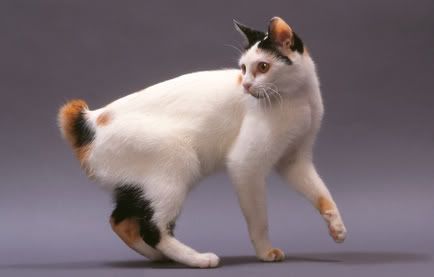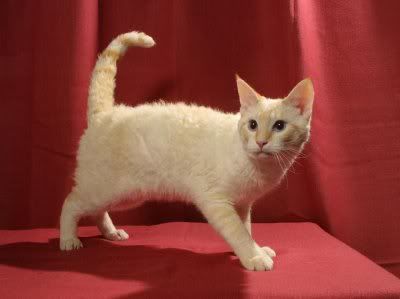Cornish Rex

status: Current
History
The history of the Cornish Rex cat breed started in Cornwall, England, in July 1950 when a tortoiseshell cat named Serena gave birth to a litter of five kittens. Serena's owner, Mrs. Nina Ennismore, noticed that one red and white colored kitten in the litter had an unusual curly coat. This kitten was named Kallibunker and he became the founder of the Cornish Rex breed.
Mrs. Nina Ennismore contacted geneticist AC Jude who suggested that she breed Kallibunker back to his mother. This mating produced a litter of three kittens with the female kitten having a straight coat and two being curly coated males. Sadly, one of the male kittens died, but the other male (named Poldhu) along with his father (Kallibunker) sired further litters. The Cornish Rex was an endangered breed due to the gene pool being very limited in the 1950s and 1960s. Cross-breeding was done with Russian Blues, American Shorthairs, Havana Browns, Siamese and British Shorthair cat breeds. This created a strong foundation for the breed as well as genetic diversity.
Life magazine published an article on the Cornish Rex in 1956 and this article generated attention worldwide. In 1957 Frances Blancheri imported a Cornish Rex into California. This cat was pregnant by her father Poldhu and a litter of 4 kittens were born. This marked the start of the Cornish Rex cat breed in North America.
Description
The Cornish Rex cat breed is a tall, slender cat with a fine boned appearance. Despite their dainty looks, these cats are muscular and strong. This different cat breed has dainty paws and they tend to walk on tip-toe. There is a natural arch to the back which matches a tuck-up to their waist which flows into a long tail. The ears are tall and placed high on the head, with oval eyes that slants upward slightly. The head is often described as looking like an egg on its side.
Males weigh between 8-10 pounds and females weigh between 5-7 pounds.
The most distinguishing feature about the Cornish Rex cat breed is, of course, the coat - even the whiskers on this cat breed are curled.
There are no guard hairs as with most other cats and the hair lies in waves that can be loose or tight. The hair itself is soft and silky and does not require much grooming.
Care should be taken to clean the ears and toes of the Cornish Rex with damp cotton wool as these areas tend to get greasy. The Cornish Rex comes in all patterns and colors, from solid to pointed to tabbies. The body of the Cornish Rex is warm to the touch and their average body temperature is slightly higher than normal.
The American Cornish Rex differs from the UK cat in its head shape, body shape and a little in the coat.
Personality & Temperament
The Cornish Rex cat breed is a social and unreserved cat that likes to be the center of attention.
This different cat breed has earned the nickname of "velcro cat" as it can often be found stuck to its owner!
They are intelligent, athletic and acrobatic, often performing for you like a clown would.
These cats are lively and love to play games. They will learn quickly to play fetch and you will have to play this game for hours on end.
The Cornish Rex makes a wonderful pet as they are very good with children.
If you plan on leaving your cat alone for long periods of time, get a companion cat as the Cornish Rex does not do well on its own.
They are not vocal cats, but rather express emotion through body language with a pat on the cheek with a soft paw or a flip of the tail.Dog breeds with curled hair such as poodles do not shed dead hair until they are brushed and so minimize the risk of allergic responses.
Hopes were that the Cornish Rex cat would be a hypo-allergenic cat breed because of its coat type, and so would be suitable to people with allergies.
However, allergic reactions to cats are due to the protein Fel D1 that is present in hair, saliva and skin of a cat. In other words, the coat type of the cat has little influence on allergies.
Health Issues
The Cornish Rex is a hardy cat breed with few health issues. Due to the short coat, the Cornish Rex is not suited to very cold climates.

status: Current
History
The history of the Cornish Rex cat breed started in Cornwall, England, in July 1950 when a tortoiseshell cat named Serena gave birth to a litter of five kittens. Serena's owner, Mrs. Nina Ennismore, noticed that one red and white colored kitten in the litter had an unusual curly coat. This kitten was named Kallibunker and he became the founder of the Cornish Rex breed.
Mrs. Nina Ennismore contacted geneticist AC Jude who suggested that she breed Kallibunker back to his mother. This mating produced a litter of three kittens with the female kitten having a straight coat and two being curly coated males. Sadly, one of the male kittens died, but the other male (named Poldhu) along with his father (Kallibunker) sired further litters. The Cornish Rex was an endangered breed due to the gene pool being very limited in the 1950s and 1960s. Cross-breeding was done with Russian Blues, American Shorthairs, Havana Browns, Siamese and British Shorthair cat breeds. This created a strong foundation for the breed as well as genetic diversity.
Life magazine published an article on the Cornish Rex in 1956 and this article generated attention worldwide. In 1957 Frances Blancheri imported a Cornish Rex into California. This cat was pregnant by her father Poldhu and a litter of 4 kittens were born. This marked the start of the Cornish Rex cat breed in North America.
Description
The Cornish Rex cat breed is a tall, slender cat with a fine boned appearance. Despite their dainty looks, these cats are muscular and strong. This different cat breed has dainty paws and they tend to walk on tip-toe. There is a natural arch to the back which matches a tuck-up to their waist which flows into a long tail. The ears are tall and placed high on the head, with oval eyes that slants upward slightly. The head is often described as looking like an egg on its side.
Males weigh between 8-10 pounds and females weigh between 5-7 pounds.
The most distinguishing feature about the Cornish Rex cat breed is, of course, the coat - even the whiskers on this cat breed are curled.
There are no guard hairs as with most other cats and the hair lies in waves that can be loose or tight. The hair itself is soft and silky and does not require much grooming.
Care should be taken to clean the ears and toes of the Cornish Rex with damp cotton wool as these areas tend to get greasy. The Cornish Rex comes in all patterns and colors, from solid to pointed to tabbies. The body of the Cornish Rex is warm to the touch and their average body temperature is slightly higher than normal.
The American Cornish Rex differs from the UK cat in its head shape, body shape and a little in the coat.
Personality & Temperament
The Cornish Rex cat breed is a social and unreserved cat that likes to be the center of attention.
This different cat breed has earned the nickname of "velcro cat" as it can often be found stuck to its owner!
They are intelligent, athletic and acrobatic, often performing for you like a clown would.
These cats are lively and love to play games. They will learn quickly to play fetch and you will have to play this game for hours on end.
The Cornish Rex makes a wonderful pet as they are very good with children.
If you plan on leaving your cat alone for long periods of time, get a companion cat as the Cornish Rex does not do well on its own.
They are not vocal cats, but rather express emotion through body language with a pat on the cheek with a soft paw or a flip of the tail.Dog breeds with curled hair such as poodles do not shed dead hair until they are brushed and so minimize the risk of allergic responses.
Hopes were that the Cornish Rex cat would be a hypo-allergenic cat breed because of its coat type, and so would be suitable to people with allergies.
However, allergic reactions to cats are due to the protein Fel D1 that is present in hair, saliva and skin of a cat. In other words, the coat type of the cat has little influence on allergies.
Health Issues
The Cornish Rex is a hardy cat breed with few health issues. Due to the short coat, the Cornish Rex is not suited to very cold climates.










